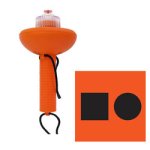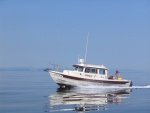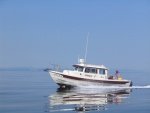Active Captain's Defender "special of the week" is a "Sirius Signal": LED SOS signal. Apparently this meets US Coast Guard requirements for a night distress signal, and a black circle/squared on orange background standard day distress signal. (for $79.99 with Active captain code)
https://siriussignal.com Is the maker's web site (all developed and made in America.
Not yet approved by Transport Canada.
What are your opinions of this as a distress signal? (As I understand, this light is the only required night distress signal--no more new flares.)
I'll reserve my thoughts for now.

https://siriussignal.com Is the maker's web site (all developed and made in America.
Not yet approved by Transport Canada.
What are your opinions of this as a distress signal? (As I understand, this light is the only required night distress signal--no more new flares.)
I'll reserve my thoughts for now.



